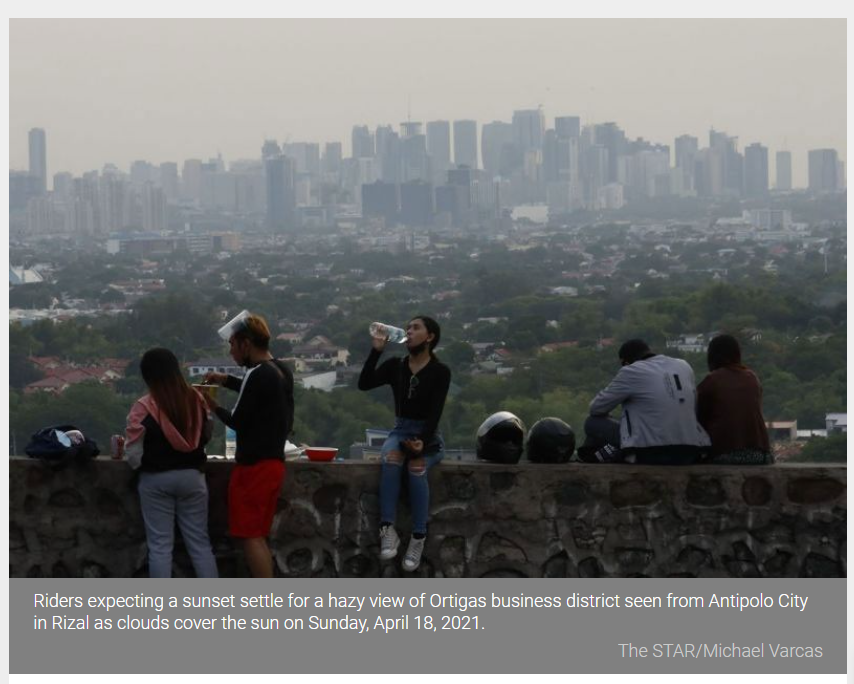Philippine recovery threatened by COVID-19 surge
MANILA, Philippines — The Philippines is likely to achieve herd immunity only in 2023 as the resurgence of COVID-19 infections over the past few months threatens the recovery from the pandemic-induced recession, according to Moody’s Analytics.
In a report, Moody’s Analytics chief economist Steven Cochrane said there is much uncertainty about the outlook for the Philippines.
“No other Asia-Pacific country may achieve herd immunity until 2022. In some places, such as in the Philippines, but also perhaps in Japan, South Korea or even China, that milestone may not be achieved until 2023,” Cochrane said.
Vaccine czar Carlito Galvez, who has denounced the reported hoarding of limited COVID-19 vaccines, earlier committed to inoculate 50 to 70 million Filipinos to achieve herd immunity this year and pursue an exit strategy to eliminate COVID-19 by next year.
Cochrane said Singapore and Malaysia are leading Southeast Asia in terms of vaccination, while Indonesia and Thailand are still struggling with COVID-19 and a slow vaccination pace.
“The Philippines is the laggard of the entire region as a record-high number of new COVID19 cases has led to a resumption of strict lockdowns in Metro Manila and the country faces a severe shortage of vaccines,” Cochrane said.
Despite imposing the longest and strictest lockdown in the world, COVID-19 cases in the Philippines is now nearing one million with more than 16,000 deaths.
The National Capital Region and nearby provinces (NCR Plus) was placed anew under enhanced community quarantine from March 29 to April 11 but was relaxed and shifted to modified enhanced community quarantine until the end of this month.
Just like Japan and South Korea, Cochrane said the situation is also dire in the Philippines as it could not bring the caseload down and now suffers under a new peak caseload.
“The lack of control of the pandemic, the inability to acquire vaccines, and the relative distance from export supply chains all factor into the outlook for the Philippines to be among the weakest in the region,” Cochrane said.
On the other hand, the research arm of the Moody’s Group said Indonesia and Malaysia have finally brought their COVID-19 waves under control, but the number of cases in both countries is still high, posing considerable risk to the outlook.
Likewise, Thailand has recently imposed additional social distancing measures with the new spike in cases.
“Clearly, the speed of vaccination across the Asia-Pacific region is an important determinant of the pace of economic recovery this year. Singapore has a great comparative advantage due not only to its effective control of COVID-19, but also to the speed of its vaccination campaign,” Cochrane said.
Moody’s Analytics said the Philippines would be the last country to return to pre-pandemic level as it is seen exceeding its fourth quarter 2019 gross domestic product (GDP) growth only by the third quarter of next year.
“And by midyear, much of the Asia- Pacific will achieve this milestone. By the end of 2021, only Thailand, Malaysia and the Philippines will still be struggling to reach this point of their economic recovery,” Cochrane said.
Moody’s Analytics expects a 6.3 percent economic growth for the Philippines this year and 7.2 percent next year.
Moody’s Analytics said the outlook for Asia-Pacific is improving as the global economy is on the cusp of an acceleration due to the global pace of vaccination and stimulative fiscal policy.
Source: https://www.philstar.com/business/2021/04/20/2092296/philippine-recovery-threatened-covid-19-surge


 Thailand
Thailand




